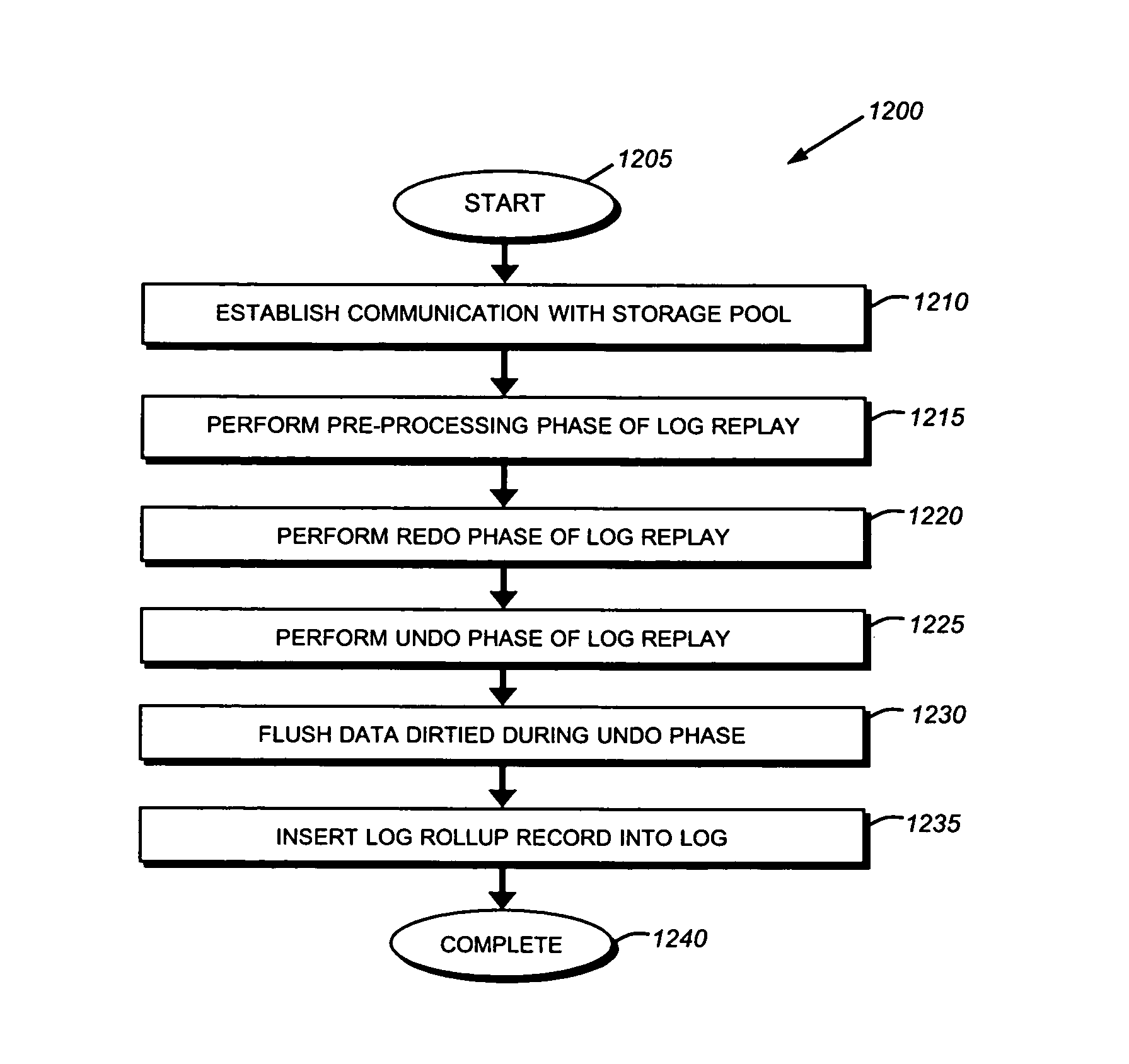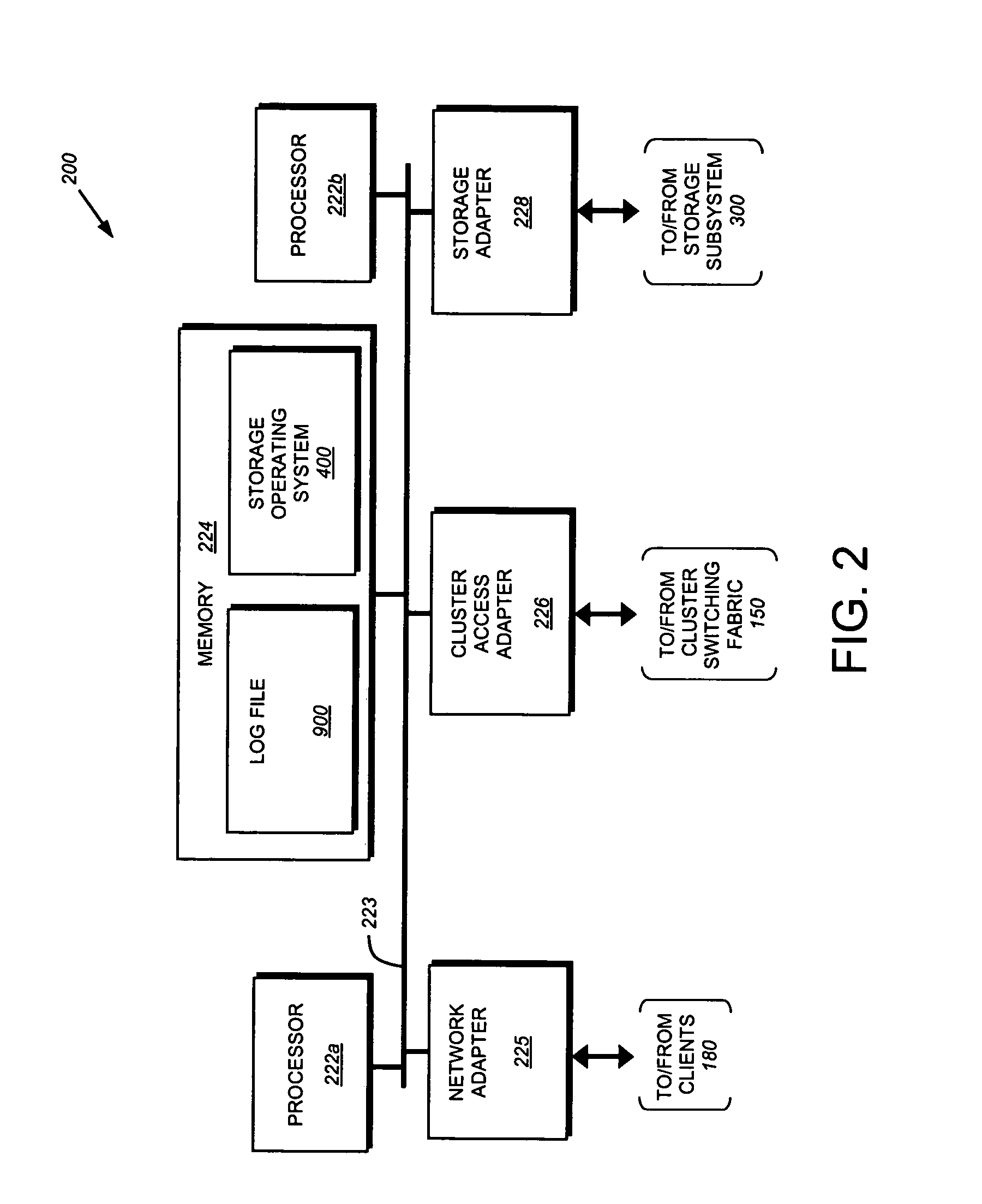Technique for accelerating log replay with partial cache flush
- Summary
- Abstract
- Description
- Claims
- Application Information
AI Technical Summary
Benefits of technology
Problems solved by technology
Method used
Image
Examples
Embodiment Construction
[0029]A. Cluster Environment
[0030]FIG. 1 is a schematic block diagram of a plurality of nodes 200 interconnected as a cluster 100 and configured to provide storage service relating to the organization of information on storage devices of a storage subsystem. The nodes 200 comprise various functional components that cooperate to provide a distributed Spin File System (SpinFS) architecture of the cluster 100. To that end, each SpinFS node 200 is generally organized as a network element (N-blade 110) and a disk element (D-blade 500). The N-blade 110 includes a plurality of ports that couple the node 200 to clients 180 over a computer network 140, while each D-blade 500 includes a plurality of ports that connect the node to a storage subsystem 300. The nodes 200 are interconnected by a cluster switching fabric 150 which, in the illustrative embodiment, may be embodied as a Gigabit Ethernet switch. The distributed SpinFS architecture is generally described in U.S. Patent Application Publ...
PUM
 Login to View More
Login to View More Abstract
Description
Claims
Application Information
 Login to View More
Login to View More - R&D
- Intellectual Property
- Life Sciences
- Materials
- Tech Scout
- Unparalleled Data Quality
- Higher Quality Content
- 60% Fewer Hallucinations
Browse by: Latest US Patents, China's latest patents, Technical Efficacy Thesaurus, Application Domain, Technology Topic, Popular Technical Reports.
© 2025 PatSnap. All rights reserved.Legal|Privacy policy|Modern Slavery Act Transparency Statement|Sitemap|About US| Contact US: help@patsnap.com



